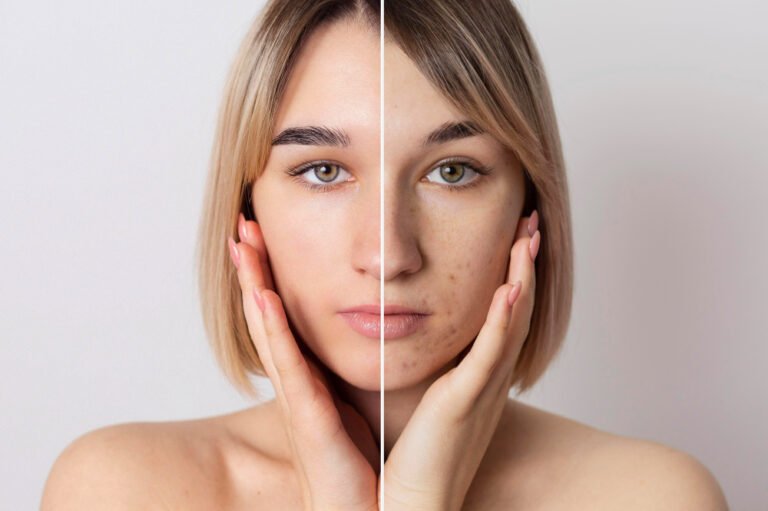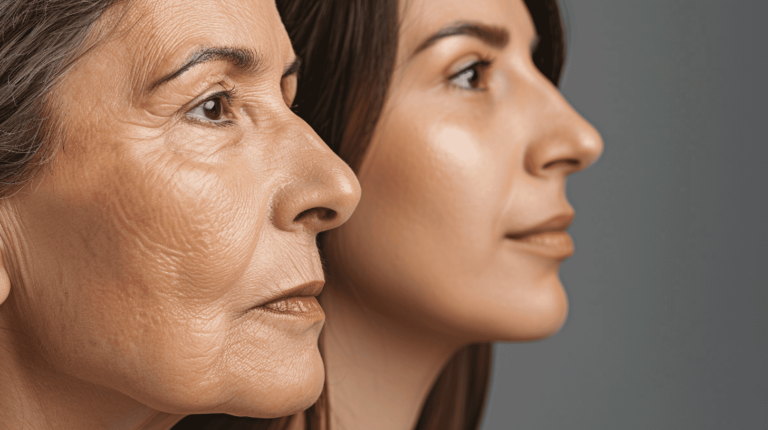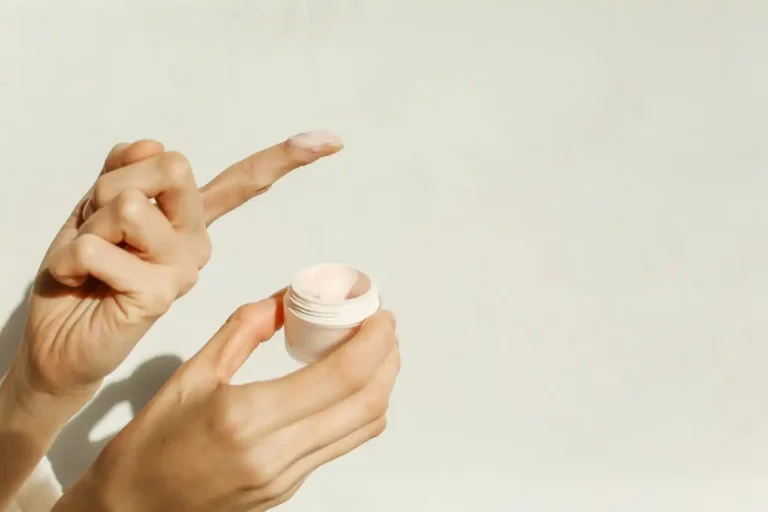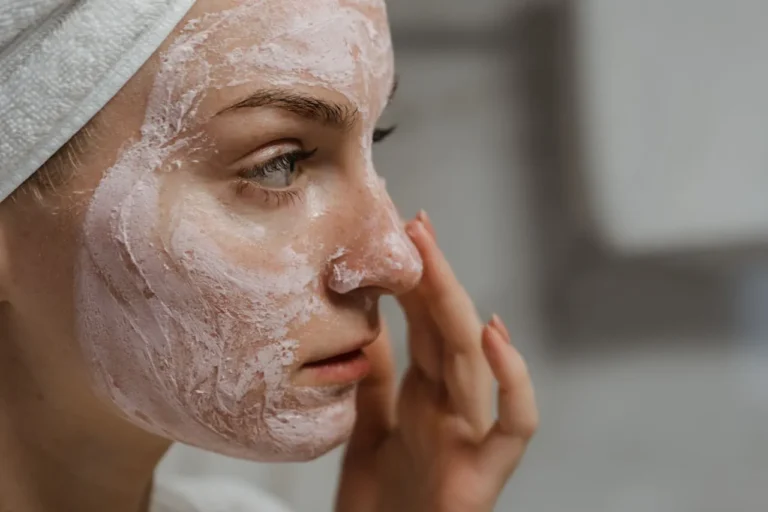How to Repair Skin Barrier Damage Fast
Your skin feels tight, irritated, and nothing seems to help anymore. You’ve probably damaged your skin barrier without realizing it.
The good news? You can fix this faster than you think. Your skin barrier wants to heal itself – you just need to give it the right conditions.
Let’s dive into proven strategies that actually work to restore your skin’s protective shield quickly and effectively.
Understanding Your Skin Barrier

Your skin barrier acts like a brick wall protecting your body from the outside world.
The “bricks” are dead skin cells, while the “mortar” contains lipids, ceramides, and natural moisturizing factors that hold everything together.
When this barrier gets damaged, you’ll notice immediate changes. Your skin becomes more sensitive to products you used to tolerate.
Moisture escapes more easily, leaving your skin dry and flaky. Irritants slip through the cracks, causing redness and inflammation.
Environmental factors like harsh weather, pollution, and UV rays constantly attack your barrier.
Aggressive skincare routines, over-exfoliation, and certain medications can also weaken this protective shield. Even stress and lack of sleep affect your skin’s ability to repair itself.
The key to fast repair lies in understanding what your barrier needs most: gentle care, proper hydration, and specific nutrients that support the healing process.
Stop the Damage First
Before you can repair your skin barrier, you must stop causing additional damage. This means putting your current skincare routine under a microscope and identifying the culprits.
Remove all exfoliating products from your routine immediately. This includes physical scrubs, chemical exfoliants like AHAs and BHAs, and retinoids.
Your damaged barrier can’t handle these active ingredients right now, no matter how gentle the formulation claims to be.
Switch to a fragrance-free, gentle cleanser that doesn’t foam aggressively. Foaming cleansers often contain sulfates that strip your skin of its natural oils.
Look for cream or oil-based cleansers that remove dirt and makeup without leaving your skin feeling tight.
Avoid products with alcohol, essential oils, or strong fragrances. These ingredients can cause immediate irritation when your barrier is compromised.
Even products labeled as “natural” can be problematic during the healing phase.
Hot water damages your skin barrier further by dissolving the lipids that hold your skin cells together.
Stick to lukewarm water for washing your face and keep shower time brief. Pat your skin dry with a clean towel instead of rubbing vigorously.
Implement the Gentle Cleansing Method
Your cleansing routine becomes crucial when repairing barrier damage. The wrong approach can set back your progress by weeks, while the right method accelerates healing.
Choose a cleanser with a pH between 5.0 and 6.5 to match your skin’s natural acidity level.
Alkaline cleansers disrupt your skin’s protective acid mantle, making it harder for your barrier to repair itself. Many gentle, cream-based cleansers fall within this ideal pH range.
Apply your cleanser to dry skin first, massaging gently with your fingertips for about 30 seconds.
This pre-cleansing step helps dissolve makeup and sunscreen without requiring harsh rubbing.
Add a small amount of lukewarm water to emulsify the cleanser, then rinse thoroughly. This method ensures complete removal without over-cleansing or irritating your skin.
Consider double cleansing if you wear makeup or sunscreen daily. Start with an oil-based cleanser to remove these products, followed by your gentle cream cleanser.
Limit cleansing to once daily during the repair phase, preferably in the evening. In the morning, simply rinse your face with lukewarm water or use a damp cloth.
Your skin produces beneficial oils overnight that help with barrier repair, and you don’t want to wash these away unnecessarily.
Master the Art of Layering Moisture

Proper hydration forms the foundation of fast barrier repair. Your approach to moisturizing can make the difference between slow improvement and rapid healing.
Apply your moisturizer to slightly damp skin immediately after cleansing. This technique, called “wet skin moisturizing,” traps additional water in your skin and enhances the effectiveness of your moisturizer. Don’t wait more than three minutes after washing your face.
Layer your products from thinnest to thickest consistency. Each layer should be absorbed before applying the next.
Start with a hydrating essence or lightweight serum, follow with your regular moisturizer, and seal everything with a facial oil or occlusive cream.
Look for moisturizers containing ceramides, which are identical to the lipids naturally found in your skin barrier.
These ingredients integrate directly into your barrier structure, speeding up the repair process. Brands like Caravel, Dr. Jars+, and Paula’s Choice offer excellent ceramide-rich options.
Don’t forget about humectants like hyaluronic acid and glycerin.
These ingredients draw moisture from the environment into your skin, but they need to be sealed in with an emollient or occlusive layer to prevent water loss.
Incorporate Barrier-Repairing Ingredients
Certain ingredients have proven scientific backing for accelerating skin barrier repair. Knowing which ones to prioritize can dramatically speed up your healing timeline.
Niacinamide stands out as one of the most effective barrier-repairing ingredients. Start with a 5% concentration and use it twice daily.
This form of vitamin B3 increases ceramide production, reduces inflammation, and strengthens your skin’s protective function.
Canella Asiatic, also known as ceca, provides powerful anti-inflammatory benefits while supporting skin regeneration.
This ingredient works particularly well for sensitive, irritated skin and can be used multiple times daily without concern.
Cholesterol, fatty acids, and ceramides in a 1:1:1 ratio mimic your skin’s natural lipid composition most effectively.
Products specifically formulated with this ratio show superior results in clinical studies compared to single-ingredient formulations.
Panthenol (pro-vitamin B5) offers immediate soothing benefits and supports long-term barrier function.
It reduces water loss, calms inflammation, and helps your skin retain moisture more effectively. Look for products with at least 1% panthenol for noticeable benefits.
Optimize Your Environment for Healing
Your surroundings play a bigger role in barrier repair than most people realize. Small environmental adjustments can significantly accelerate your progress.
Invest in a humidifier for your bedroom and main living spaces. Indoor air, especially during winter months, often lacks sufficient moisture to support optimal skin barrier function.
Aim for humidity levels between 40-60% for best results. Create a cool, still environment that supports your skin’s natural repair processes.
Protect your skin from environmental aggressors every single day. UV rays, pollution, and wind all damage your barrier and slow healing.
Use a gentle, mineral-based sunscreen with zinc oxide or titanium dioxide as the active ingredients.
Pay attention to your pillowcase and towels. Rough fabrics can cause micro-abrasions that worsen barrier damage.
Switch to silk or bamboo pillowcases and use soft, clean towels that you change frequently to prevent bacterial buildup.
Consider the temperature and airflow in your sleeping area. Excessive heat or direct air from fans and air conditioning can increase water loss from your skin overnight.
Time Your Treatments Strategically

When you apply products matters almost as much as what you apply. Strategic timing maximizes your skin’s natural repair mechanisms.
Your skin repairs itself most actively during sleep, particularly between 10 PM and 2 AM.
Apply your most nourishing, barrier-repairing products during your evening routine to support this natural process. Save lighter, protective products for morning application.
Space out any active ingredients you absolutely must continue using. Never layer multiple actives on the same night.
If you can’t completely eliminate retinoids or acids from your routine, use them only 2-3 times per week and always follow with intensive moisturizing.
Give new products at least 2-3 weeks to show results before making changes. Learn to read your skin’s signals and respond appropriately.
Barrier repair takes time, and switching products too frequently can actually slow your progress. Consistency trumps experimentation during the healing phase.
Monitor your skin’s response daily and adjust accordingly. Some days your skin might need extra moisture, while others might require lighter application.
Address Internal Factors
Your skin barrier’s health depends heavily on internal factors that topical products alone can’t address. Supporting your body from within accelerates external healing efforts.
Prioritize sleep quality and duration. During deep sleep, your body increases growth hormone production, which directly supports skin cell regeneration and barrier repair.
Aim for 7-9 hours of quality sleep nightly. Manage stress levels through proven techniques like meditation, exercise, or journaling.
Chronic stress elevates cortisol levels, which breaks down collagen and weakens your skin barrier. Even 10 minutes of daily stress reduction can improve your skin’s healing capacity.
Support your skin through nutrition by eating foods rich in omega-3 fatty acids, antioxidants, and vitamins A, C, and E.
These nutrients provide the building blocks your skin needs for effective barrier repair. Consider supplements if your diet lacks these essential elements.
Stay adequately hydrated by drinking water throughout the day.
While topical hydration remains most important for barrier function, internal hydration supports overall skin health and healing processes.
Create a Minimal Routine That Works
Simplicity becomes your best friend when repairing barrier damage. A focused, minimal routine often produces better results than complex multi-step regimens.
Morning routine should include: gentle water rinse or minimal cleansing, lightweight moisturizer, and broad-spectrum sunscreen.
Keep it simple and protective, focusing on shielding your skin from daily environmental damage.
Evening routine can be slightly more intensive: gentle cleansing, barrier-repairing serum or essence, rich moisturizer, and facial oil if needed.
This is when you do the heavy lifting for repair and regeneration. Resist the urge to add new products or steps during the healing phase.
Your skin needs consistency and time to rebuild its protective function. Save product experimentation for after your barrier has fully recovered.
Track your progress with photos and notes about how your skin feels daily.
This helps you identify which products and techniques work best for your specific skin type and damage level.
Know When to Seek Professional Help
While most barrier damage can be repaired at home, certain situations require professional intervention for optimal results.
Consult a dermatologist if your skin doesn’t improve after 4-6 weeks of consistent, gentle care.
Persistent barrier issues might indicate underlying skin conditions like eczema, rosacea, or allergic reactions that need medical treatment.
Seek immediate professional help if you experience severe burning, widespread redness, or signs of infection like pustules or unusual discharge.
These symptoms suggest more serious damage that requires medical attention.
Consider professional treatments like gentle chemical peels or barrier-supporting facials once your skin has stabilized.
A qualified aesthetician can help optimize your routine and suggest professional-grade products for maintenance.
Don’t hesitate to patch-test new products, even gentle ones, during the repair phase.
Apply a small amount to your inner wrist or behind your ear 24-48 hours before using on your face to avoid unnecessary setbacks.
Maintain Your Results Long-Term

Once you’ve successfully repaired your skin barrier, maintaining these results requires ongoing attention and smart choices.
Gradually reintroduce active ingredients if desired, starting with the lowest concentrations and monitoring your skin’s response carefully.
Your newly repaired barrier will be more resilient but still needs respectful treatment. Prevention remains easier than repair.
Continue using barrier-supporting ingredients like ceramides and niacinamide as maintenance, even when your skin feels completely normal.
Adjust your routine seasonally to account for environmental changes. Remember that barrier health is an ongoing process, not a destination.
Your skin might need richer products in winter and lighter formulations in summer, but the basic principles of gentle care remain constant.
Consistent, mindful skincare practices will keep your skin barrier strong and resilient for years to come.
Conclusion
Repairing skin barrier damage fast requires patience, consistency, and the right approach.
Focus on gentle care, strategic hydration, and barrier-supporting ingredients for optimal results.







